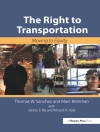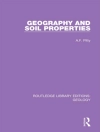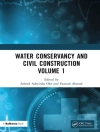Over the past 50 years the volume of wastewater has grown exponentially as a result of the increasing world population and the expansion of industrial developments. Researchers all over the world have been trying to address this issue suitably in order to fight water scarcity; yet, it is only recently that wastewater recycling has caught their attention as an effective and responsible solution.
Wastewater is a resource that can be adequately treated to successfully satisfy most water demands as well as decreasing wastewater discharges and preventing pollution. This book presents the studies of some of the most prestigious international scientists and gathers them in three different sections: Wastewater Management and Reuse, Wastewater Treatment options and Risk Assessment. The result is an insightful analysis of waste water management, its treatments, and the processes that have been studied, optimized and developed so far to sustain our environment.
Wastewater Reuse and Management represents a valuable resource to academic researchers, students, institutions, environmentalists, and anyone interested in environmental policies aimed at safeguarding both the quality and the quantity of water.
Зміст
PART I: Wastewater Management and reuse.- Wastewater Management Journey – From Indus Valley Civilisation to the Twenty first Century.- Integration of Membrane Processes for Optimal Wastewater Management.- Recent advances in the reuse of wastewaters for promoting sustainable development.- Reducing the Pollution from Tanneries by Processing Wastewater reuse and membrane technologies.- Wastewater Reuse Focused on Industrial Applications.- PART II: Wastewater Treatment Options.- Hazardous Agents in Wastewater – Public Health Impacts and Treatment Options for Safe Disposal and Reuse.- The small-scale approach in wastewater treatment.- Hospital Wastewaters: Quali-quantitative Characterization and for Treatment and Disposal.- Advances in Mechanical Dewatering of Wastewater Sludge Treatment.- Biosorption of Heavy Metals: Recent trends and Challenges.- Water Desalination by Sola Energy.- AOPs Applications on Dyes Removal.- Constructed wetlands for reducing pesticide inputs into surface water and groundwater.- PART III: Risk Assessment.- Tracing nitrogen sources and cycle in freshwater through Nitrogen and Oxygen isotopic research.- A step-wise approach to assess the fate of nitrogen species in agricultural lowlands.- Environmental risk assessment of WW II shipwreck pollution.- Methods to countermeasure the intrusion of seawater into coastal aquifer systems.
Про автора
Prof. (Dr.) Sanjay K. Sharma is a very well known author and Editor of many books, research journals and hundreds of articles from last twenty years. His recently published books are ‘Green Corrosion Chemistry and Engineering’ (From Wiley-VCH, Germany), ‘Green Chemistry for Environmental Sustainability’ , ‘Handbook on Applications of Ultrasound: Sonochemistry and Sustainability’ (both from CRC Taylor & Francis Group, LLC, Florida, Boca Raton, USA) and ‘Handbook of Applied Biopolymer Technology: Synthesis, Degradation and Applications’(From Royal Society of Chemistry, UK). He has also been appointed as Series Editor by Springer’s UK for their prestigious book Series ‘Green Chemistry for Sustainability’. His work in the field of Green Corrosion Inhibitors is very well recognized and praised by international research community. Other than this he is known as a person who is dedicated to educate people about environmental awareness, especially for Rain Water Harvesting.
Dr. Sharma has 13 Books of Chemistry from National-International Publishers and over 48 research papers of National and International repute to his credit. Dr. Sharma is also serving as Editor-in-Chief for four international research journals ‘RASAYAN Journal of Chemistry’, ‘International Journal of Chemical, Environmental and Pharmaceutical Research’ , ‘International Journal of Water Treatment & Green Chemistry’ and ‘Water: Research & Development’. He is also a reviewer for many other international journals including the prestigious Green Chemistry Letters & Reviews.
Presently he is working as Professor of Chemistry at Jaipur Engineering College & Research Centre, JECRC Foundation, Jaipur (Rajasthan) India, where he is teaching Engineering Chemistry and Environmental Engineering Courses to B. Tech. Students, Spectroscopy courses to PG students and pursuing his research interests. He is a member of American Chemical Society(USA), International Society for Environmental Information Sciences (ISEIS, Canada) and Green Chemistry Network (Royal Society of Chemists, UK) and is also life member of various international professional societies including International Society of Analytical Scientists, Indian Council of Chemists, International Congress of Chemistry and Environment, Indian Chemical Society, etc.
E-mail: [email protected]
Dr Rashmi Sanghi is currently working as a Research Consultant at the Indian Institute of Technology Kanpur and guest faculty at the LNM Institute of Information Technology, Jaipur. After obtaining her D.Phil degree from Chemistry Department, University of Allahabad, India in 1994 she has been working at the Indian Institute of Technology Kanpur India as a research Scientist. She was a visiting Scientist, Chemistry Department, Rutgers University, Piscataway, NJ, USA in 1997and worked with Worked with Professor Alan S. Goldman.
She is passionate about environmental green chemistry and her major research interests are bioremediation, biopolymers and biosynthesis of nanomaterials using microbes and/ or polysaccharides. Her research mainly focuses on the development of methods that can help in minimizing or eliminating the hazardous substances in the environment. Some of this work related to the green environmental chemistry is nothing but outstanding. She has traveled worldwide for various academic activities and/or professional talks. Her work on design and application of biopolymers in wastewater remediation shows great promise as evident by her patents “A method for preparing auto capped nano particles such as Cd S in continuous flow columns” using fungus and “Poly(acryl amide) grafted Cassia grandis-silica hybrid: efficient metal ion adsorbent”. She has over 90 international journal publications to her credit. She has published three books on green chemistry: “Green Chemistry: Environment Friendly Alternatives” (2003), “Green Chemistry and Sustainable Development” (2005) and “Green Chemistry for Environmental Remediation” (2011). She is a member of many academic societies and reviewer of many international journals.
E-mail: [email protected]; [email protected]












